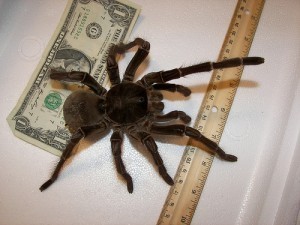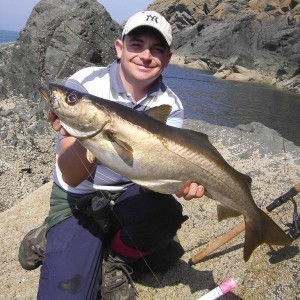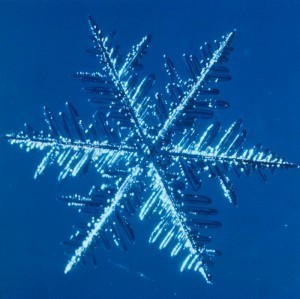Biggest Spider Ever Caught
The biggest spider ever caught is the Goliath bird eater (Theraphosa blondi). The spider’s legs have a span of 12 inches (30 cm). It weighs ounces (170 g). The average Goliath bird eater spans 10 inches. The spider belongs to the tarantula group. The spider earned its name when an explorer saw one eating a hummingbird.
Habitat
The Goliath bird eater is native to the South American rainforests. Goliath bird eaters burrow deep into the earth. Many of them can be spotted in marshy and swampy places. Most dig their own burrows. However, others just use burrows left by other animals.
Breeding
Female Goliath bird eaters never fail to mate. The male is always eaten after mating. Females attain sexual maturity at three or four years of age. This is true for the biggest spider ever caught and
those in the wild. The typical female Goliath can lay as many as 200 eggs. These hatch in about two months.
The average lifespan of the female Goliath is 15 to 25 years. Males have a much shorter lifespan. Majority die after sexual maturity is reached. The typical male Goliath bird eater lives for three to six years.
Appearance 
The spider’s colors vary from light to dark brown. Many of them have some markings around the leg area. Hair is present on the legs, abdomen and the rest of the body.
The bird eater is also noteworthy for its lack of tibial spurs. It is one of the few tarantula species not to have this. In other spiders, the tibial furs are used to immobilize the female fangs when mating. It is necessary to stop the female from consuming the male. But it isn’t present in the Goliath.
In spite of its appearance, the Goliath bird eater is harmless to people. The venom from its bite is no deadlier than the wasp’s sting.
The Largest Spider Ever?
Scientists have uncovered the remains of a fossil arachnid half a meter long. It is over 300 million yeas old. The specimen has been dubbed Megarachne servinei.
Some think it is a spider, but others contend that it is another arachnid, probably a descendant of the spider. The creature had large jaws and a shield over its stomach. Whatever it was, it must have feasted on cockroaches and animals of similar size.
The biggest spider ever caught did not feed on birds. Neither does the species in general. Their diet usually consists of invertebrates and different kinds of insects.





